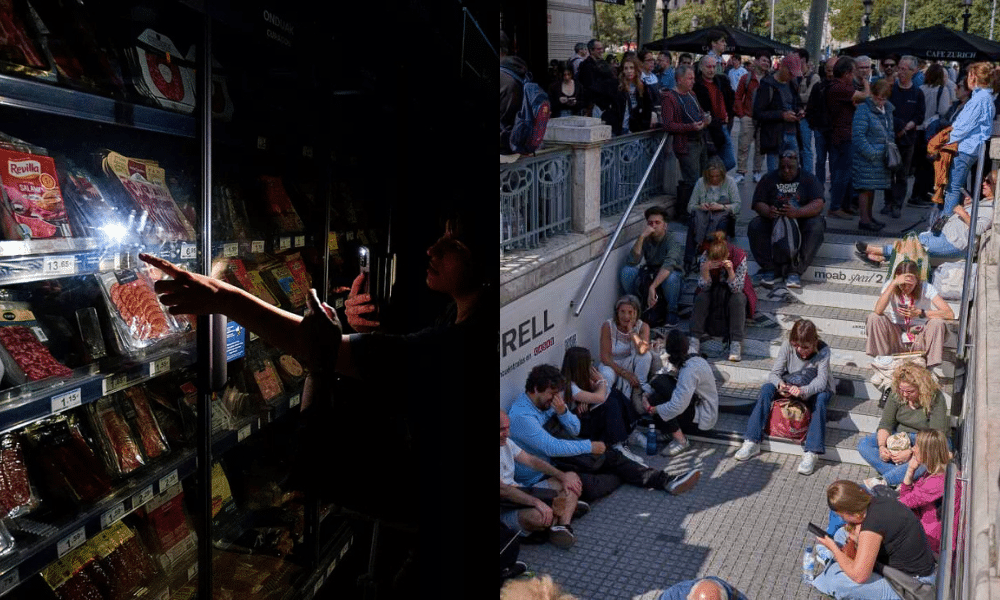On 28 April 2025, a massive power outage plunged Spain and Portugal into darkness, affecting over 60 million people across the Iberian Peninsula and parts of southern France. Trains halted, flights were grounded, and hospitals relied on backup generators as cities like Madrid and Lisbon scrambled to cope. As power returns, the cause of the blackout is being drawn into the light. Many questions remain and many Aussies are begging the question: could the events in Europe unfold here? How can home solar and battery storage prevent the implications of a blackout?
What caused the blackout?
As of the time of writing, there has been no definitive answer to the cause of the blackout. A few theories have been floated:
1. Rare atmospheric phenomenon
The Portuguese grid operator, REN, suggested that extreme temperature variations led to oscillations in high-voltage lines, disrupting the grid’s synchronisation. This “induced atmospheric vibration” could have triggered a cascading failure across the interconnected European grid.
2. Technical faults in the grid
Experts have pointed to potential technical failures involving the electricity grid’s system frequency. If the frequency deviates significantly from the standard due to imbalances in supply and demand, automated load shedding and generator shutdowns can cause widespread blackouts.
3. Equipment failure or fire
An earlier theory posited that a fire in southern France damaged a high-voltage line, contributing to the blackout. However, the French grid operator, RTE, has denied any such incident occurred in the area.
4. Cyberattack
While initial speculation included the possibility of a cyberattack, authorities from both Spain and Portugal have found no evidence supporting this theory. Investigations by national cybersecurity agencies have so far ruled out malicious digital interference.
While the exact cause remains unconfirmed, the leading theories involve a rare atmospheric event or technical failures within the grid. Authorities continue to investigate to prevent future occurrences.
Why did the infrastructure fail?
Europe’s grid is a complex web, balancing supply and demand in real-time. The sudden oscillations overwhelmed the system’s ability to maintain stability. Moreover, the Iberian Peninsula’s limited interconnection, only 6% with the broader European grid, hampered recovery efforts.
This incident underscores the challenges of modernising energy infrastructure to accommodate renewable sources while ensuring reliability.
Why nuclear plants couldn’t supply power
Although nuclear reactors are designed to provide consistent baseload power, they rely on a stable and synchronised grid to operate effectively. The blackout was likely triggered by a rare atmospheric phenomenon known as “induced atmospheric vibration,” which caused high-voltage power lines to oscillate abnormally. This likely led to a loss of synchronisation in the electrical network, disconnecting Spain from the European grid and resulting in a collapse of the Iberian electricity system.
In such scenarios, nuclear plants automatically shut down or reduce output to protect both the reactors and the grid infrastructure. Attempting to feed power into an unstable or collapsed grid can damage equipment and pose safety risks.
The role of nuclear energy in Spain
Prior to the blackout, Spain’s seven operating nuclear reactors, Almaraz I and II, Ascó I and II, Cofrentes, Trillo, and Vandellós II, contributed approximately 20% of the country’s electricity. However, the incident has intensified discussions about the reliability of the energy mix and the country’s plans to phase out nuclear power by 2035.
While nuclear power plants are reliable under normal conditions, their operation depends on a stable grid. The unique nature of the blackout rendered them temporarily unable to supply power, highlighting the importance of grid stability in energy planning.
Could it happen here?
Absolutely. Australia’s energy market faces its own set of challenges. The Australian Energy Market Operator (AEMO) has warned of elevated blackout risks in New South Wales, Victoria, and South Australia, especially during peak summer demand.
Factors include aging coal-fired power stations nearing retirement, delays in renewable energy projects, and increasing demand from extreme weather events. Without urgent investment in infrastructure and storage solutions, Australia could face similar large-scale outages.
The nuclear debate down under
As the federal election looms, energy policy is a hot topic. Opposition Leader Peter Dutton advocates for nuclear power, proposing to lift the decades-old ban and establish reactors across the country.
However, critics argue that nuclear energy is costly, slow to deploy, and lacks community support. Dutton’s campaign has notably avoided visiting proposed nuclear sites, raising questions about transparency and public engagement.
Read more about the Coalition’s nuclear energy plans.
How Australians can safeguard their homes
While national solutions are debated, individuals can take proactive steps:
- Invest in rooftop solar: Harnessing the sun reduces reliance on the grid and cuts electricity bills.
- Add battery storage: Storing excess energy ensures power during outages and peak demand times.
- Energy-efficient appliances: Modern devices consume less power, easing strain on the grid.
- Stay informed: Understanding your energy usage and local grid conditions helps in planning and conservation.
Final thoughts
Europe’s blackout serves as a stark reminder of the fragility of modern energy systems. As Australia navigates its energy transition, balancing reliability, sustainability, and affordability is crucial. By combining national policy with individual action, we can work towards a resilient energy future.
Energy Matters encourages all Australians to take hold of their own energy security. Where possible, powering your home with solar energy and battery storage will provide your home with the security it needs if and when the power goes out. Homes with battery backup can operate independently from the grid during blackout events, keeping the lights on for days or even weeks. Don’t leave your home exposed to the fluctuations of the energy grid, install solar and batteries now. Get FREE Quotes for Solar, Batteries, Energy Efficient Products, plus MORE.














































